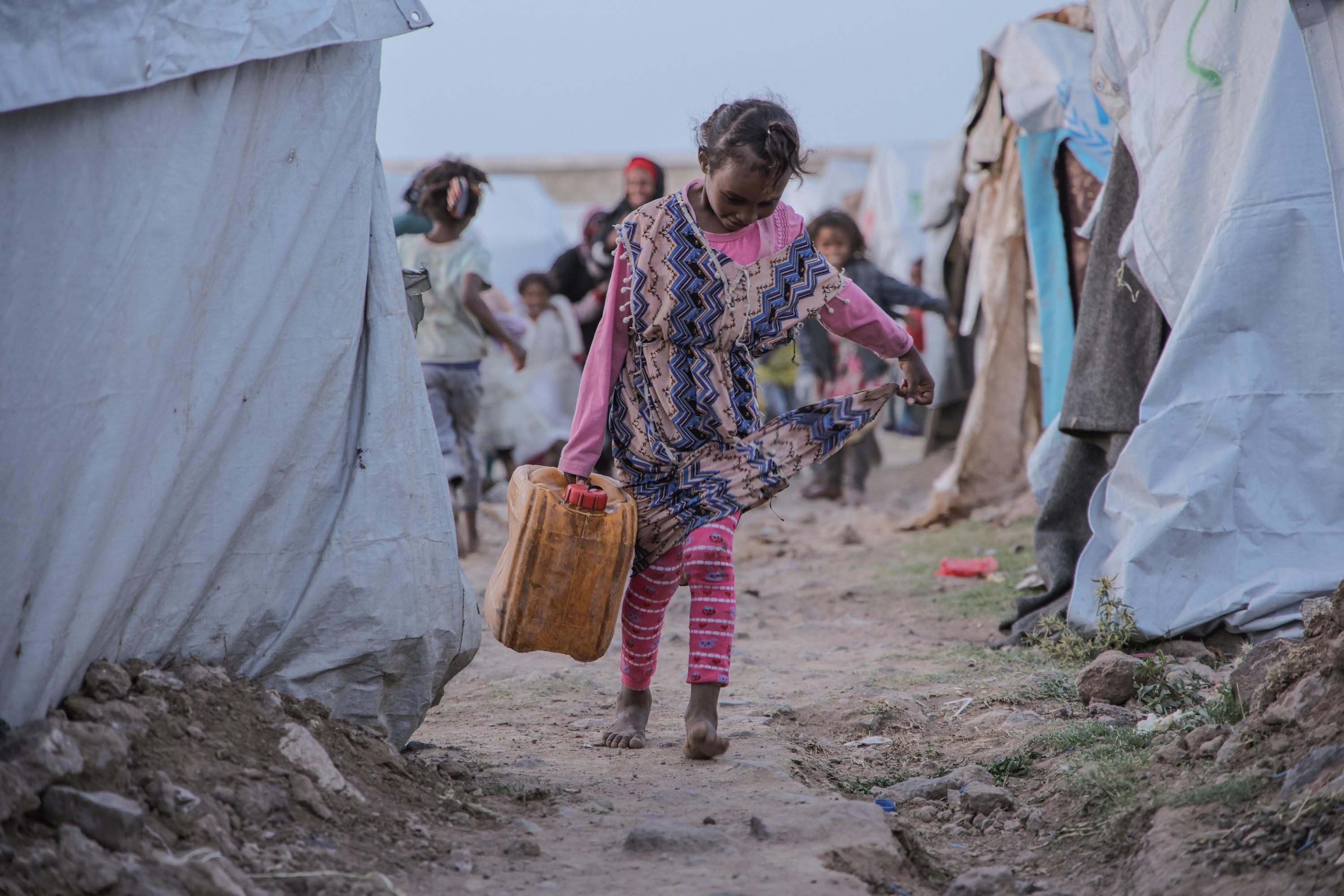
Al-jadad IDPs camp, Dhamar, Yemen. An IDP girl carrying one of the only two jars of water given to her family per day (UNDP)
Last updated on: 11-08-2024 at 8 PM Aden Time
Aden (South24)
A report issued by the World Bank on Sunday revealed that the poverty rate in Yemen has risen to 74% of the population, highlighting the severe economic deterioration resulting from almost a decade of conflict, which has pushed millions to the brink of extreme poverty.
The report, titled "Yemen Poverty and Equity Assessment 2024", indicated that Yemen was already struggling economically before the war began in September 2014, with 49% of the population living below the national poverty line. The conflict has since exacerbated the situation, causing a 56% contraction in GDP, reducing it to approximately $650 per capita by 2022.
According to the report, the local currency, the Yemeni riyal, has witnessed a significant decline in value, particularly in areas controlled by the internationally recognized government, from 215 riyals to the dollar in 2014 to over 1,200 riyals per dollar by mid-2023. This devaluation has led to skyrocketing prices of basic goods, further reducing the purchasing power of Yemeni families.
The report also underscores a deepening food security crisis, with 50% of Yemeni households experiencing severe food shortages. 45% of these families have been forced to adopt extreme coping strategies, such as pulling children out of school, child labor, and child marriage. Meanwhile, Yemen is now one of the worst countries in the world for child malnutrition, with 49% of children suffering from stunting and 41% underweight.
Furthermore, the conflict has devastated the country's basic infrastructure. The percentage of households receiving electricity from the public grid has plummeted from 78% in 2014 to just 15% in 2023. Access to improved drinking water has also sharply declined from 57% to 16% during the same period.
The World Bank indicated that the humanitarian situation in Yemen continues to deteriorate, with 86% of households having exhausted most of their productive assets, such as livestock or land, leaving them unable to cope with ongoing economic shocks. The funding gap for humanitarian aid in Yemen has risen to $1.5 billion in 2023, with less than half of the required funding from the United Nations secured.
The report concluded with calls from the World Bank on the international community to intensify efforts to support Yemen, warning that without effective intervention, the humanitarian and economic conditions will continue to deteriorate, pushing millions more Yemenis into poverty and hunger.
In December 2023, the World Food Programme (WFP) paused the provision of aid to areas of Yemen under Houthi control, due to a lack of funding or agreement with local authorities on distribution. The WFP has not resumed its operations in these areas, though continues in areas controlled by the internationally recognized government.
Related: WFP pauses aid distribution in Houthi-controlled areas
In May of this year, international organizations appealed to the international community to increase efforts to support humanitarian needs in Yemen, with the Norwegian Refugee Council reporting that donor support had “collapsed”, raising only $735 million of the $2.7 billion needed to meet the country’s needs this year.
Previous reports from the World Bank have estimated that 17 million people in Yemen, more than half the population, are food insecure, with millions of children facing life-threatening malnutrition. A World Bank report in April warned that Yemen risked becoming the world’s poorest country due to war and rising food insecurity.
South24 Center